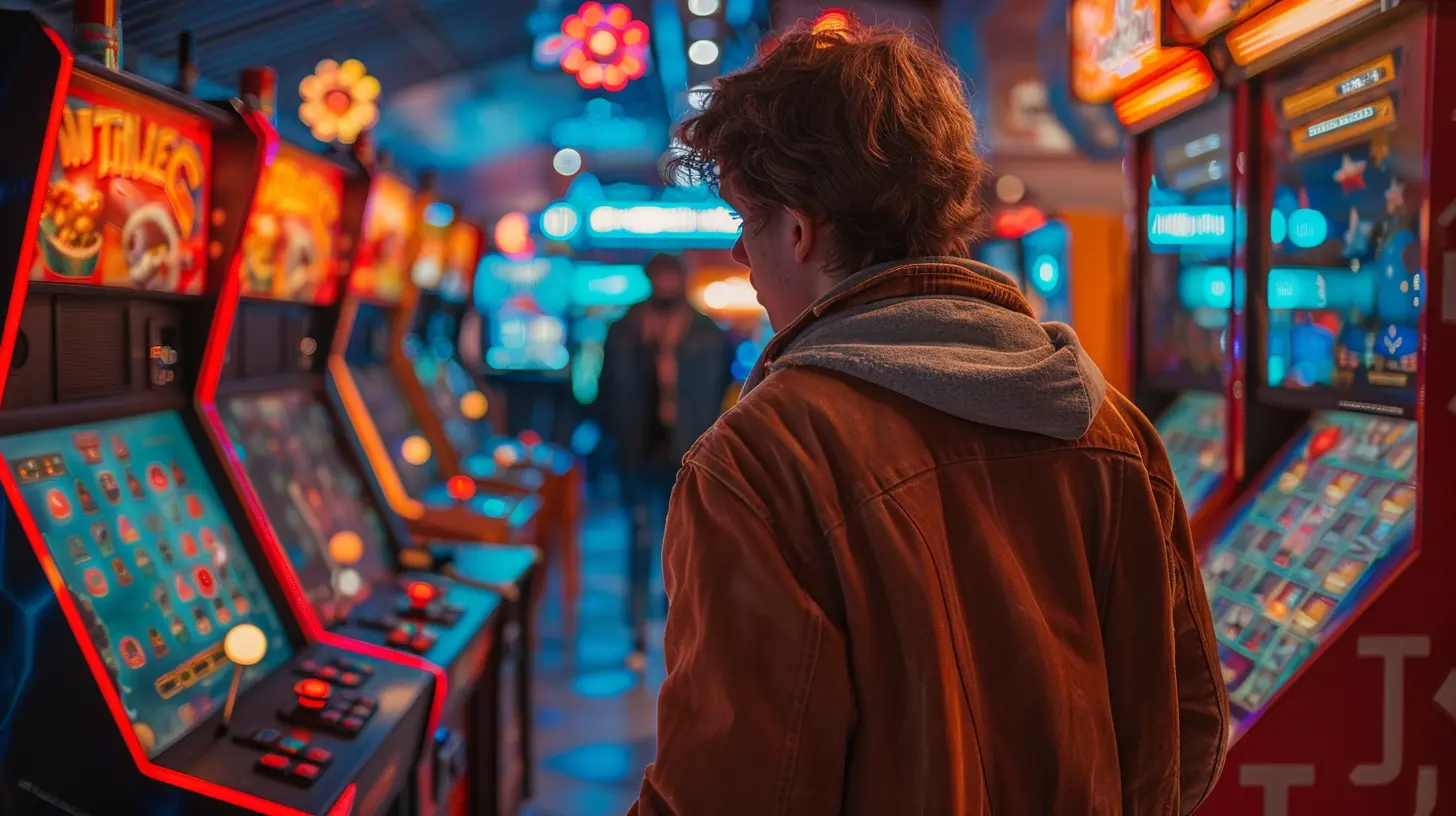The Psychology Behind Microtransactions: Why Do We Keep Buying?
12 July 2025
Let’s be real—the moment we fire up our favorite game, the temptation begins. Maybe it’s a flashy new skin, a loot box promising rare rewards, or a shiny piece of gear that screams “You need me!” You tell yourself, “It’s just $1.99,” and before you know it, you’ve spent enough to have bought the game... again.
Sound familiar?
You're not alone. Microtransactions have become a central part of gaming culture and business. But why, in a world where we know these purchases often don’t offer much in terms of real value, do we keep reaching for the “Buy Now” button?
Let’s break it down. We’re diving into the psychology behind microtransactions—the sneaky, clever, and sometimes downright manipulative tactics that keep us spending.
What Are Microtransactions, Really?
Okay, before we dive deep, let’s get on the same page.Microtransactions are those small in-game purchases. You know, the $0.99 that gets you 100 gems. Or the $4.99 battle pass. Or maybe $19.99 for a skin pack that makes your character finally look like the legendary assassin-wizard-ninja you always imagined.
They’re everywhere—from mobile games to console blockbusters—and they rake in billions each year. But they’re not just about buying stuff. They’re about tapping into our brains in very specific (and very powerful) ways.
The Dopamine Jackpot: How Games Hack Your Brain
Remember that little rush you felt when you got your first loot box reward?That’s dopamine doing its thing.
Dopamine is the brain's "feel-good" chemical. It's not just about pleasure—it’s about anticipation. And guess what? Microtransactions (especially randomized ones like loot boxes) are designed to trigger it.
When you buy a loot box, you’re not just buying an item; you’re buying the thrill of possibility. That kind of variable reward system is the same psychological trick that makes slot machines so addictive.
So even if we intellectually know it's random, our brains treat the anticipation like a jackpot moment. And that single emotion? It’s incredibly powerful.
The Sunk Cost Fallacy: “Well, I’ve Already Spent This Much…”
Imagine you’ve been playing a game for a while, maybe weeks, months, even years.Now, you've spent a little money here and there—on boosts, cosmetics, maybe a season pass or two. So when a new item comes out, your brain goes, “It’s not like I haven’t already spent money. What’s a few more bucks?”
That’s the sunk cost fallacy in action.
It’s this sneaky mental bias where we feel compelled to continue investing in something we’ve already put time (or money) into, even if it’s no longer giving us equal value. And games absolutely count on this. They know the more we invest—our time, our emotions, our wallets—the harder it is for us to walk away.
FOMO Is Real: The Fear of Missing Out
You log in and see a limited-time offer: “Get this exclusive skin before it’s gone!”Suddenly, your palms are sweaty. You don’t even know if you like the skin that much, but the idea of it disappearing forever? That’s unbearable.
This is the Fear of Missing Out, or FOMO. And companies weaponize it.
Timed offers. Rotating shops. Seasonal events. Exclusive pre-purchase bonuses. All of these create urgency. They make you feel like if you don’t act now, you’ll miss your chance forever. And that taps directly into an anxiety loop that makes even calm-headed gamers hit “confirm purchase” faster than you can say “PayPal.”
Social Status and the “Cool Factor”
Let’s not pretend vanity doesn’t play a role here.A big part of online gaming is showing off—your gear, your skin, your mount, whatever. And developers know that. They lean hard into status symbols, often locking “prestige” cosmetics or improvements behind microtransactions.
Ever walked into a multiplayer lobby and saw someone with an ultra-rare skin that everyone wants? You’re not thinking about how much they spent. You’re thinking, “Dang, I need that.”
And there it is. Social proof. We’re wired to want things that others value. Combine that with public leaderboards, live-streaming culture, and peer comparisons in games, and you’ve got a recipe for spending.
The Illusion of Progress
How many times have you thought, “If I just spend a few bucks, I’ll finally beat that boss or level up faster?”Some microtransactions sell convenience. They promise progress—faster XP, better weapons, more resources. And when a game is designed to feel grindy, slow, or even frustrating, players start to see payment as the solution.
This is strategic. Some game systems are built with friction in mind—they deliberately limit progression speed or create barriers that can be bypassed with payment. It’s like installing a toll booth on a free road. Sure, you can walk... but that shiny express lane looks awfully tempting.
Personalization and Ownership
Do you remember customizing your MySpace page or your Xbox avatar back in the day?We love making things our own. When a game gives us the ability to personalize our characters, weapons, or environment, it triggers a stronger sense of ownership. And we’re way more likely to invest in something we feel emotionally attached to.
Microtransactions that offer cosmetic changes hit this sweet spot. Even if they don't change gameplay, they let us say, “Hey, this is my character.” That kind of emotional investment turns into real-dollar investment very quickly.
The "It's Only a Few Bucks" Trap
Let’s talk about the masterstroke behind microtransactions: pricing.Game devs are clever. They don’t ask you to drop $50. They ask for $0.99... maybe $4.99 max. Sounds harmless, right?
That’s the psychological trick. It feels like such a small amount that it can’t possibly hurt. But those small purchases add up fast—especially when you’re buying digital currency with odd numbers (like 1,200 gems for $9.99) that don’t map easily to real-world value.
Before you know it, you’re spending money without even really tracking it. It’s like buying snacks at a gas station—you don’t realize how much you’ve spent until you check your bank statement.
Mobile Games: The Microtransaction Playground
If console and PC games are the suburbs, then mobile games are Las Vegas.These games are designed from the ground up to collect microtransactions like candy on Halloween. Why? Because mobile gaming is often free-to-play. Developers know they need to monetize somehow, and microtransactions are the golden ticket.
They use push notifications, time gates, reward ads, daily login bonuses—anything to keep you coming back. And when you’re addicted to the loop, dropping a couple bucks here and there feels justified. It's the digital equivalent of buying "just one more turn."
Kids, Whales, and the Ethics
Now, let’s not sugarcoat it. There’s controversy here too.Some microtransactions target younger players who don’t fully understand money. Others rely on a small group of "whales"—people who spend hundreds or even thousands of dollars in a single game.
Critics argue that it’s predatory. And honestly? In some cases, it is.
Game developers walk a tightrope between good business and exploitation. The best games find a way to offer value without manipulation. But plenty cross the line—and that’s why we’ve seen lawsuits, regulations, and public outcry.
So... Why Do We Keep Buying?
Here’s the deal. Microtransactions are like candy at the checkout line. You don’t need it. But it’s right there. It’s cheap. And you’re already standing in line.Our brains are wired to respond to instant gratification, social cues, fear of missing out, and emotional investment. Games exploit all of that to get us to spend money—and they’ve gotten very good at it.
But knowing the tricks is half the battle.
Once you recognize the psychological levers being pulled, you start to gain control. You might still buy a skin or two, but now you’re doing it because you want to—not because the game pushed the right buttons in your brain.
And hey, sometimes it’s okay to treat yourself. Just maybe don’t spend your rent money on a sword made of flames and pixels.
Final Thoughts: Can We Ever Escape Microtransactions?
Honestly? Probably not.They’re too profitable, too embedded in modern gaming. But what we can do is approach them with a bit more awareness. Microtransactions aren't going anywhere, but that doesn’t mean we have to be mindless about it.
So next time your finger’s hovering over that “Buy” button, stop and think: “Why do I really want this?” If it’s because it makes the game more fun, cool. If it’s because you feel pressured, maybe pump the brakes.
Gaming is meant to be fun—not a constant tug-of-war with your wallet.
all images in this post were generated using AI tools
Category:
MicrotransactionsAuthor:

Greyson McVeigh
Discussion
rate this article
1 comments
Octavia Monroe
Microtransactions tap into our primal instincts—instant gratification meets social validation. It's like digital candy; we know it's bad for us, yet we can't resist one more purchase. The game developers are the dealers, and we’re all just players in this psychological playground, chasing the next dopamine hit.
August 22, 2025 at 3:01 PM

Greyson McVeigh
You're spot on! Microtransactions exploit our psychological triggers for instant gratification and social validation, making them hard to resist despite knowing their pitfalls. It’s a compelling cycle that keeps players engaged and spending.


